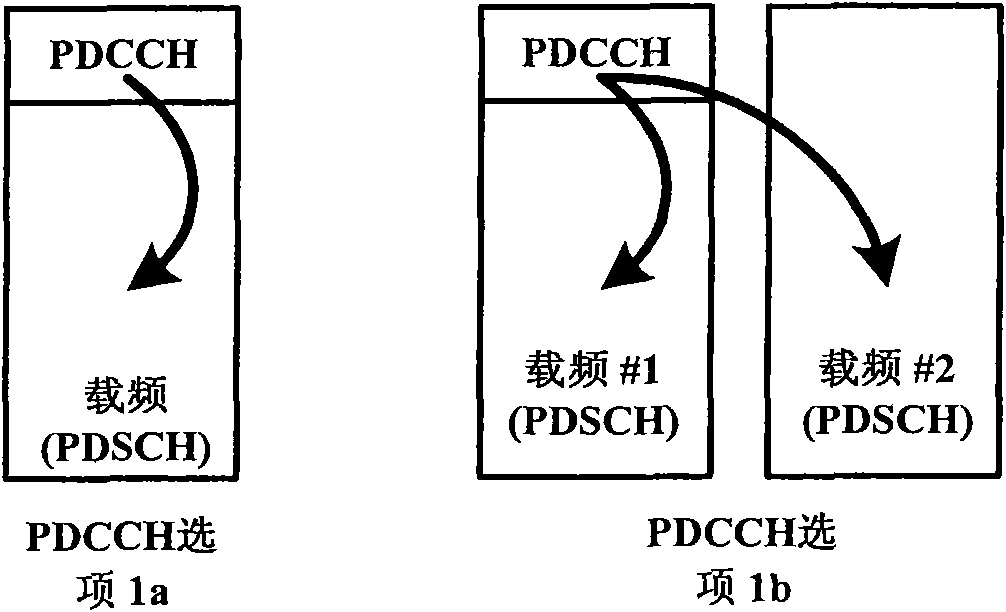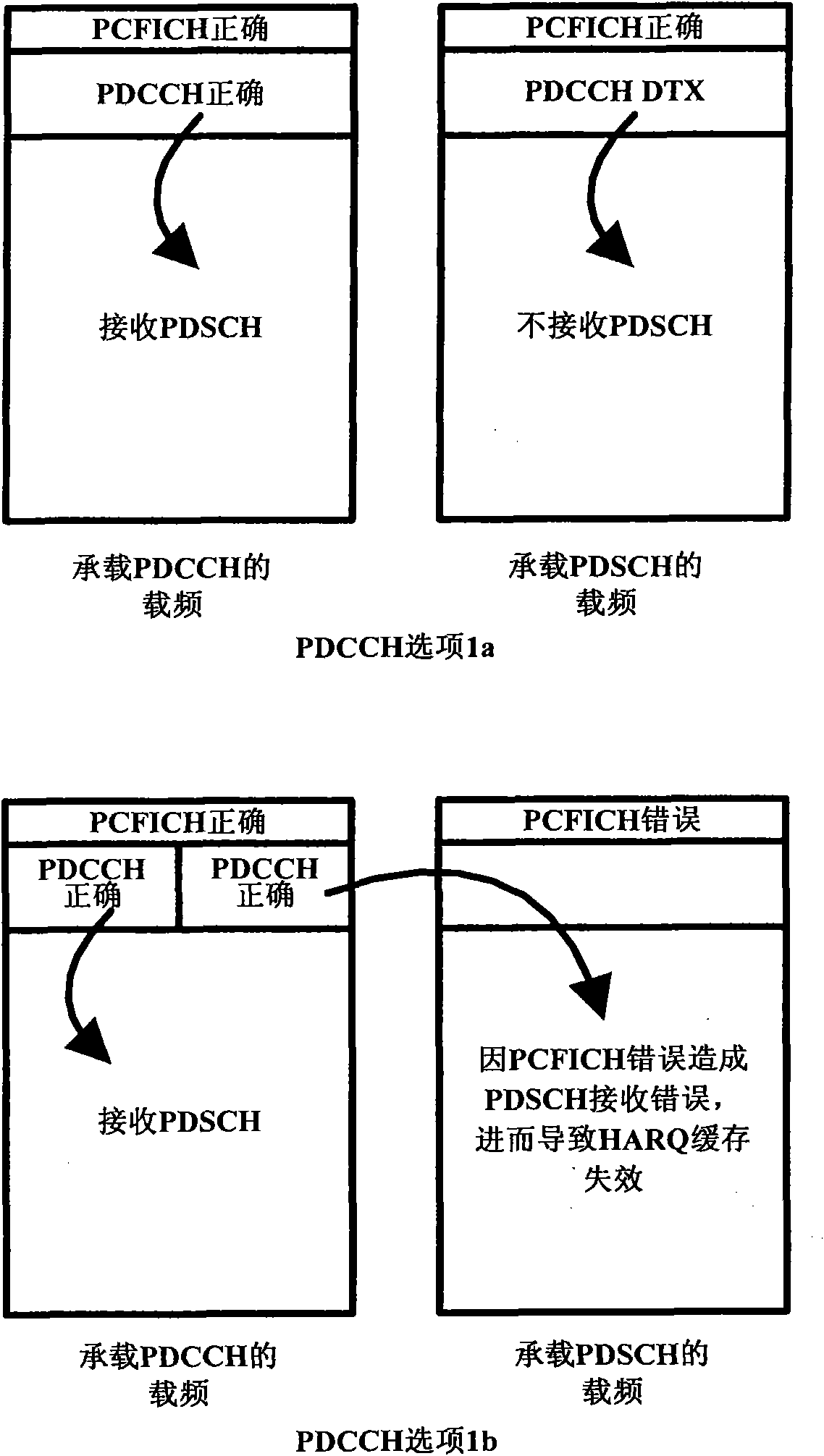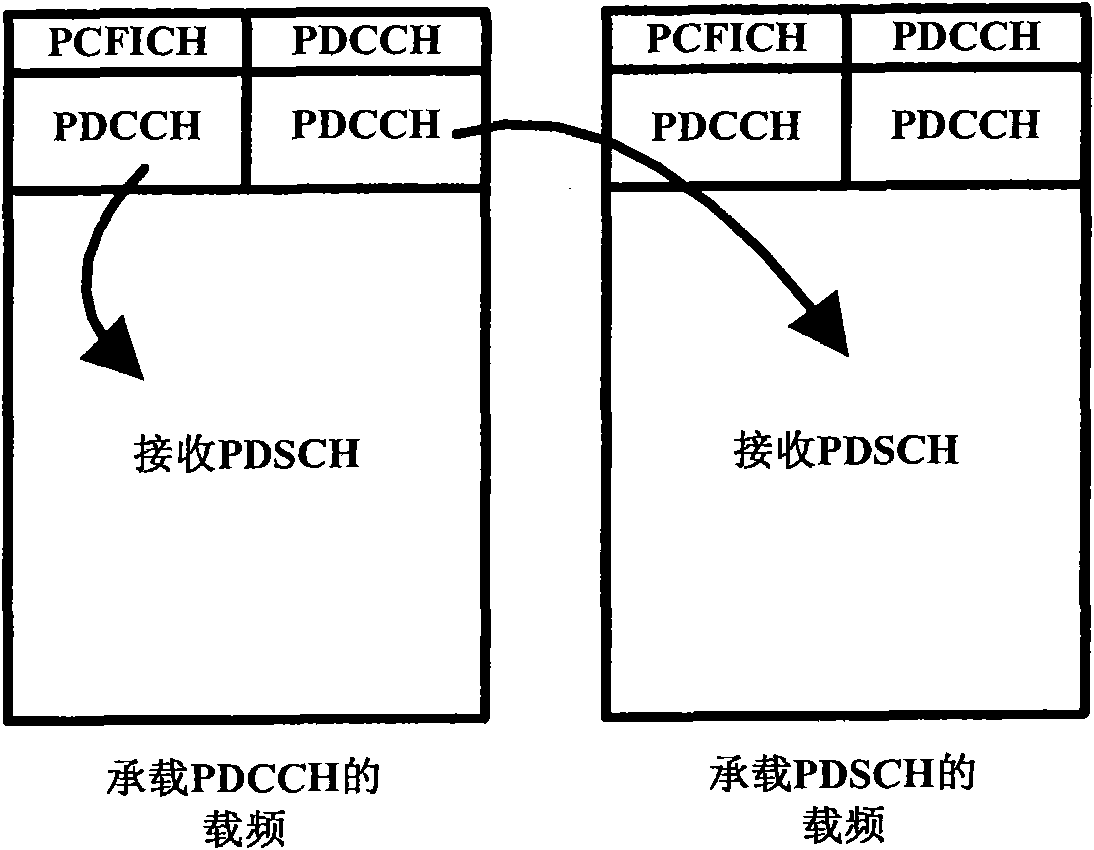Method for processing cross-carrier indication and user equipment
A user equipment, cross-carrier frequency technology, applied in the direction of network traffic/resource management, communication between multiple stations, access restrictions, etc., can solve the large control information overhead, decoding impact, threatening the correct reception of transmission blocks, etc. problem, to achieve the effect of solving the HARQ cache invalidation of hybrid automatic retransmission and ensuring normal and efficient
- Summary
- Abstract
- Description
- Claims
- Application Information
AI Technical Summary
Problems solved by technology
Method used
Image
Examples
Embodiment 1a
[0051] Such as Figure 5 As shown, several resource elements RE (Resource Element) or several control channel elements CCE (Control Channel Element) are reserved in the control information area on the carrier frequency carrying the PDSCH. The positions of these reserved resources are associated with the number of control information symbols indicated by the PCFICH, and the content may be a sequence of a certain length, which is agreed in advance between the base station and the user equipment. The coding and modulation scheme may be the same as the coding and modulation scheme of the CCE where it is located. Therefore, the detection result of the PCFICH on the carrier frequency carrying the PDSCH can be further confirmed through these reserved resources, thereby improving the detection accuracy of the PCFICH.
[0052] The specific flow chart of the PDCCH cross-carrier frequency indication mechanism in the LTE-A system using this method is as follows Figure 6 Shown:
[0053...
Embodiment 1b
[0057] Same as Embodiment 1a, a number of resource elements RE or a number of control channel elements CCE are reserved at predetermined positions in the control information area on the carrier frequency carrying the PDSCH. The difference is that the predetermined locations where these resources are located can be pre-agreed between the base station and the user equipment, and the content contained in these reserved resources is according to the 3GPP specification document (TS 36.212V8.7.0, "Evolved Universal Terrestrial Radio Access ( E-UTRA); Multiplexing and channel coding") by encoding the number of control information symbols indicated by PCFICH by the method specified in section 5.3.4.1. For example, the encoding method of this content can be the same as that of PCFICH. This operation does not change the original PCFICH, and the user equipment jointly detects the contents of the PCFICH and the reserved resources when receiving it, for example, jointly decodes the contents...
Embodiment 1c
[0063] Such as Figure 8 As shown, the concept of resource reservation in this embodiment is the same as that in embodiments 1a and 1b, except that the resource reserved at this time is located at a predetermined position in the data information area of the carrier frequency carrying the PDSCH. The specific position may be selected to be associated with the number of control information symbols indicated by the PCFICH, or not. For example, the position in the time domain can be selected as the fourth OFDM symbol of the current subframe, and the position in the frequency domain can be dispersed in the frequency domain subcarriers of the symbol as much as possible, for example, one resource unit can be allocated to each resource block. At this time, attention should be paid to avoiding the reference signal Port 5 originally used in multi-user MIMO (Multiple Input Multiple Output). One method is to use the method specified in Section 6.10.3.2 of the 3GPP specification document...
PUM
 Login to View More
Login to View More Abstract
Description
Claims
Application Information
 Login to View More
Login to View More - R&D
- Intellectual Property
- Life Sciences
- Materials
- Tech Scout
- Unparalleled Data Quality
- Higher Quality Content
- 60% Fewer Hallucinations
Browse by: Latest US Patents, China's latest patents, Technical Efficacy Thesaurus, Application Domain, Technology Topic, Popular Technical Reports.
© 2025 PatSnap. All rights reserved.Legal|Privacy policy|Modern Slavery Act Transparency Statement|Sitemap|About US| Contact US: help@patsnap.com



